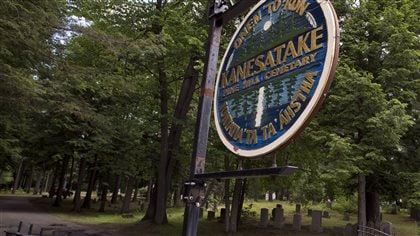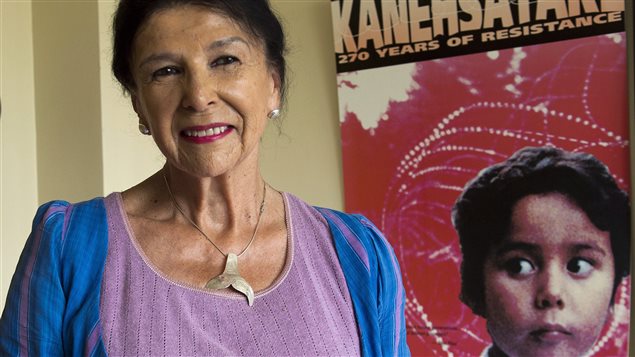The Oka crisis exploded in a hail of gun-fire on July 11th 1990. This weekend marks the 25th anniversary of the conflict. Corporal Marcel Lemay, a member of the Provincial Police Force, was shot and died, that day, but where the bullet came from has never been revealed.
“It was really a turning point for all the indigenous people in the country.”
The violence was the result of weeks of growing tension, as the nearby Mohawk community of Kahnestake, resisted the Town Council of Oka’s demand that they vacate the road they were blocking in a stand to protect their land, including their cemetery, to make way for the intended expansion of a golf course.

The Mayor of Oka, Jean Ouellette, called in the police and the 78-day stand-off began. The army then arrived, in the wake of the shooting, and the tensions grew. So did the international attention.
The nearby indigenous community of Kahnawake, just south of Montreal, blocked a bridge on its territory, in support of the stand-off. This prevented access to Montreal to over 65,000 commuters a day
It was a very dangerous place to be
Alanis Obomsawin, is a member of the Abenaki First Nation from the Odanak community, located on the St. Lawrence River, half-way between Quebec City and Montreal.
She was in her car driving in nearby Montreal when she heard the news. A filmmaker with Canada’s National Film Board, she drove immediately to the scene of the stand-off, and spent the next two months recording the developments from behind the barricade.
ListenIt was not an easy experience. She endured insults and taunting from the provincial police force as she and her crew fought to get through the barricade to the Mohawk people defending their land. She said “it was a very dangerous place to be”.
Today Obomsawin says, “It was really a turning point for all the indigenous people in the country.” She says, “This movement of land-taking has been around for always, and mostly I would say all the communities have lost land to the next-door municipality for years. And this time, to have such a stand against that, really woke up all Canadians, and people didn’t know the history really. And what they’ve learned about our people a lot of it was very oppressive, racist and propaganda in the classroom, against our people.”
This was teaching hate towards our people with a license
Alanis Obomsawin recalls the fear and frayed nerves inside the barricade. She credits two traditional chiefs with perhaps altering history, by dealing with the warriors and reminding them of the history and the traditions of their people. The chiefs emphasized it was the land they were protecting and there was no need to kill or be killed. Meanwhile the negotiations continued on the outside, with the provincial and federal governments.
By September 26th the negotiating back and forth resulted in the people of Kanesatake putting their guns into a fire and coming out peacefully. The expansion of the golf course was cancelled.
For Obomsawin herself, exiting the situation had to be negotiated. She refused offers from the army or the police to be escorted to a nearby town to meet representatives from the NFB. She demanded a lawyer, and one of her colleagues from the NFB escort her out of Kahnesatake, in order to hold on the footage and interviews she had shot. Her documentary, Kanesatake: 270 Years of Resistance, was released in 1993.
Obomsawin is hopeful about the future. She attended the ceremony for the release fo the Truth and Reconciliation Report, and described it as very moving. She sees it as a major step forward in Aboriginal -Canadian relations. And she looks to the higher education of so many young indigenous people these days in comparison to the barriers of the past. She explains that it was only in 1960 that indigenous people became ‘citizens’ of Canada. In Quebec, it was not until 1969.
“I’m 82 years-old and I’m only thankful to have witnessed all these things, I know the history and I witnessed a better time and better rights to our people and better education.”







For reasons beyond our control, and for an undetermined period of time, our comment section is now closed. However, our social networks remain open to your contributions.